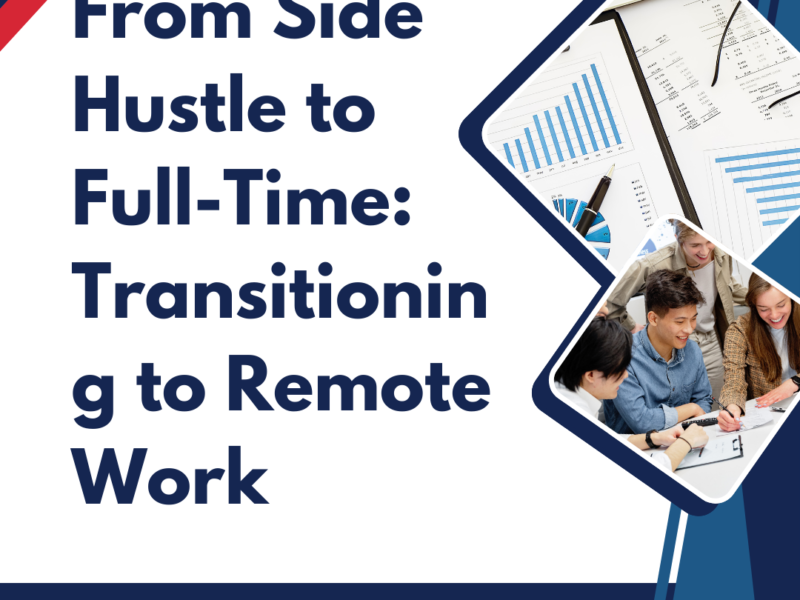The Ultimate Home Office – What Resources and Tips Do For Remote Workers
The home office has moved from being a stop-gap, temporary presence to now being seen as a proper hub of productivity for most people because of the dominance of work-from-home practices in contemporary workplaces. The home office was once a nice-to-have for some telecommuters or freelancers; now it is an essential part of all but millions of people. Call it full remote working, freelancing, or hybrid working. Space does a pretty good job of making people feel more or less productive, happier, and generally satisfied with their jobs. The Ultimate Home Office – What Resources and Tips.

Making the perfect home office is not about getting the perfect desk or chair; it is about creating a space where the individual can work with focus, creativity, and comfort, along with providing all tools and technologies necessary to work smoothly. This article is about understanding the various essential features of a beautiful home office-from finding the right space and right furniture to digitally optimizing tools, ergonomic enhancement, and a healthy work-life balance.
Ideal Workspace
The initial step in establishing an ideal home office is determining a space for your workspace. You will spend most of your time here, and it should match productivity with comfort.
1.1. Designating a Quiet Space
You need to set aside a spot in the house dedicated to home office use where distractions can be minimized. Ideally, there should be a separate room where a door can be closed. If not, set the corner part of the room for a specific purpose: work. The more detached your working environment is from your personal life, the better the focus you will have.
If one does not have that kind of space, one can try using noise-canceling headphones or white noise machines to drown out the sounds of distractions in his environment. This way, he can also put up boundaries with family members or housemates, who will respect this person’s space while he is working. The Ultimate Home Office – What Resources and Tips.
1.2. Illumination that Matters
It is universally applicable to say that lighting is one among several critical factors in any given workspace. An ill-lit workspace can strain the eyes, incapacitate its occupant, or induce headaches. A bright one will instead stimulate and boost the mood and productivity of its occupant. Natural lighting is at its best, and if possible, sit by the window along the width of the workspace. Studies have indicated that natural lighting improves focus, enhances mood, and regulates the circadian rhythm.
If your workspace is without any windows, think the possibility of investing in good artificial, adjustable daylight-like illumination. A very good example is the desk lamp integrated with LED bulbs and adjusted brightness and color temperature compatible with the vision of anyone who would want to be able to work without eye strain.
1.3. Privacy and Quiet
Privacy is dear for someone with a home office, especially when one is dealing with confidential information; thus, a quiet area of the house is ideal. The perfect workplace would be devoid of any distractions. If you have meetings or video calls, you will use headphones and your space must be uncluttered. You will find a clean environment helps to focus, which makes it cleaner for virtual meetings. The Ultimate Home Office – What Resources and Tips.
2. Furniture and Ergonomics
It becomes highly important to invest in appropriate furniture for your comfort and productivity. Long working hours in an uncomfortable chair or while working with an improperly designed desk can lead to your body exerting stress on different joints, rendering you uncomfortable, and likely resulting in long-term health issues. Let’s look at some of the basic furniture that make up a functional and ergonomic home office.
2.1. Ergonomic Chair
Your office chair forms an essential pillar of the experience of comfort and health in your physical being while working from home. Good ergonomic chairs have the ability to allow you to recline comfortably and support your back’s lower region that induces the correct posture plus easy adjustable parts that fit your body type.
Key features in an ergonomic chair are:
1. Height adjustable seat: It allows the position of feet to go flat on the floor with the knee bent to a perfect angle of 90 degrees.
2. Lumbar support : The right lumbar support allows for maintaining the natural curve of the spine and prevents having a back pain.
3. Armrest adjustments: Armrests able to be adjusted reduce unnecessary strain on the neck and shoulders when arms are allowed to rest comfortably.
4. Swivel and mobility: It could make your work easier for accessing all parts of the desk without effort.” The Ultimate Home Office – What Resources and Tips.
2.2. Standing Desk or Adjustable Desk
Sitting in one position for hours has a negative effect on our body and can give rise to quite a few painful concerns, reduce circulation, and induce fatigue. A standing desk or adjustable sit or stand desk enables one to alternate positions throughout the day and keeps one from standing or sitting for hours, lessening both discomfort and energy levels.
Most standing desks electric or manual, adjust height for the desk easily. If full standing desk is not within budget then an effective alternative is a desk converter, which is a smaller, portable solution that sits on top of your existing desk and allows you to raise your monitor and keyboard to standing height.
2.3. Keyboard and Mouse
Placement of your keyboard and mouse becomes yet another important aspect of ergonomics. You probably know that when you put hands on the built-in keyboard of a laptop, you will have to keep the laptop screen at a height not great, leading to wrist strain and discomfort.
You should probably consider an external keyboard and mouse and keep your wrists in a neutral position, with the elbows forming a 90-degree angle with the keyboard. A wrist rest for both keyboard and mouse can ease the strain further.
3. Tools and Technology for Productive Endeavors
Like premises and furniture, technology also plays an important and decisive role in sustaining productivity and efficiency. The right tools can help manage chores organized, allow a person to communicate as effectively as possible, and complete tasks in less time.
3.1. A Computer or Laptop, Dependable
Your home office’s computer or laptop is the foundation. Buy that device which you will require to get the usual jobs done. It is of great importance to have a good-quality laptop or desktop with appropriate storage, a good processor, and good speed to prevent annoying slow speed or crashing.
If you expect to use your laptop or computer for video conferencing or for a lot of graphics work, invest in one with a good camera, microphone, and screen resolution. More often, though, for those who work with audio or video editing, gaming, or programming, such activities usually require a high-performance desktop or laptop specialized in certain capabilities.
3.2. Monitor
In case of using a laptop, install an external monitor to raise productivity. It becomes quite easy to use multiple open windows simultaneously since it reduces the hassle of toggling through tabs while at work.
Monitors along with adjustable stands help keep the screen at eye level and minimize strain on the neck. Many monitors also have mechanisms to filter blue rays to minimize fatigue because of prolonged monitor usage.
3.3. Keyboard and Mouse
Ergonomic considerations aside, having a good keyboard and mouse improves efficiency. Most typists prefer a mechanical keyboard stick because of its tactile feedback and durability.
Wireless keyboards and mice help eliminate cable clutter, thus organizing your workplace. More ergonomic versions are designed to help one keep the hands and wrists healthy. For better navigation, opt for a mouse that has customizable buttons for your exact precision task.
3.4. Earphones with Noise Cancellation
For many remote workers, it is easy to become distracted by the myriad things and events going on around them in their homes. Noise-canceling headphones can provide a good sense of immersion in work by completely blocking out most of the external noises. These headphones are promising for video calls as they make the audio clearer, without interference from ambient noises.
It is even better if the noise-cancelling headsets have accurate microphone quality combined with a good battery life so that they can live stream from video conferences. Many would also offer the electric Bluetooth feature in their noise-cancellation headsets.
3.5. Video Conferencing Tools
Remote work requires continued virtual meetings among workers. Make provision for a reliable video conferencing platform such as Zoom, Microsoft Teams, or Google Meet. These allow users to collaborate using their interface in ways of screen sharing and voice communication with colleagues.
Invest in a webcam and microphone for professionalism in virtual meetings. Most of these high-quality webcams can have visual adjustment options for light management and background management that offers users more appeal.
4. Organization for Efficiency
An organized space is one of the most important ways to stay focused and productive. Easily, a messy house or office could lead to distractions and stress. Here are some tips – keep your home office orderly and efficient.
4.1. Desk Organization
Then use such systems of desk organizer, drawer, or a filing cabinet to keep your work area away from clutter. Prioritize a system for filing away key documents and materials into grab and go without disrupting workflow.
That’s also a type of keeping the desk clean-cable management. Consider such means like a cable clip, tie, or a box of cable management for coffers and wires so that they are organized into a neat bunch. A clean desk has had much to do with less mental clutter and more productivity.
4.2. Task Management Software
Task management software systems remind you of to-do lists, deadlines, and combinations. Tools like Trello, Asana, or Monday.com enable you to create highly detailed task lists, priority lists, and follow through. For personal task management, tools like Todoist or Notion can be helpful in organizing your day.
That is why you should break your tasks into smaller, more manageable portions as this will allow you to remain focused as well as ensure steady progress towards particular goals.
4.3. Minimizing distractions
Apart from flexibility when working remotely, working from home also makes one susceptible to distractions. Here are some strategies that can be applied to minimize interruptions:
Find a way to establish your boundaries with family members or housemates while at work.
Install website blockers (like Freedom or StayFocusd) to deny access to distracting sites during working hours.
Reduce personal calls when you’re on duty to maintain focus.
5. Fortune at Work-Life Balance
The ideal home office is as much about productivity as it is work-life balance, for all its cluttered charm. Remote work tends to produce blurbs between work and personal life and requires as much routine and strategy as anything else to keep from getting toast.
5.1. Consider Setting Hours
One of the issues associated with homeworking is the problem of time management itself. Fix regular hours when you start and finish your workday. Tell your team these hours to get everyone in the same alignment.
5.2. Break and Move Often
Many people, when working at home, easily forget to get a break. Take at least a few minutes break every once in a while for your mind and body. Apply techniques such as the Pomodoro for managing your time in work occupations and enjoy some breaks within the day.
5.3. Separate Work from Personal Space
When possible, physically separate your work space from your personal space. This creates a boundary that signals to your brain when it’s time to work and when it’s time to relax.
Conclusion
Creating the perfect home office is a blend of thoughtful planning, investment in the right tools, and maintaining balance. That includes everything from ergonomic furniture to high-quality tech tools in the home office environment. Now your home office environment will be the most critical thing in how productive you will be, how comfortable you are, and even how healthy you are as a remote worker. When you have carefully considered how to lay out your workspace, spend your money wisely on essential tools, and organize your environment, you will create a home office that will be productive, comfortable, and motivating so that you will thrive in the remote world.


